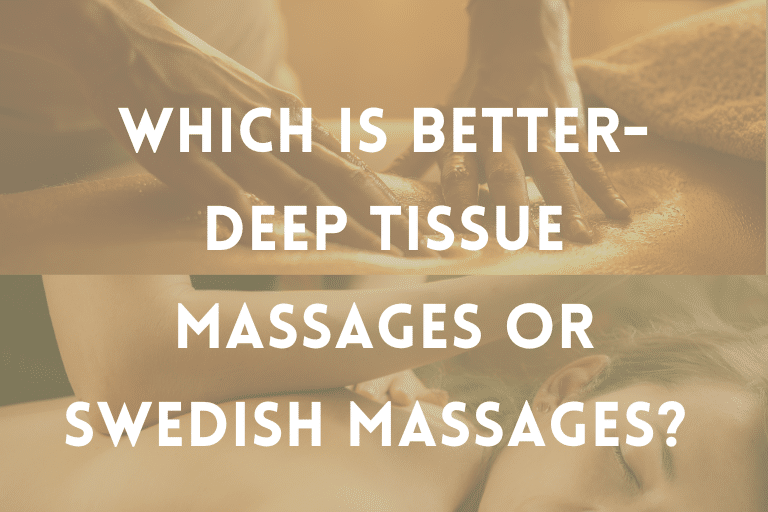
It is often hard to know where to start when picking the right massage: which is best suited to your needs, if there are any conditions ruled out, and if there are any side effects to be aware of. When deciding between a Deep Tissue Massage or Swedish Massage it can often be confusing what the differences are. Although they both have similarities, there are definitely some important variables that should be considered when booking. We have put together a list of these to help when picking, designed to inform and guide your decision.
Where do Deep Tissue Massages and Swedish Massages target?
As both techniques are performed in the same area including the back, shoulders, and neck it can often be mistaken they intend to target the same place. However, a Deep Tissue Massage aims to reach below surface level, targeting the inner layers. This can include the muscles, tendons, or connective tissue. In comparison, a Swedish Massage only focuses on the top level. It manipulates the soft tissue by performing a range of movements, reaching only the superficial tissue.
What are the benefits of both?
All massages have multiple benefits that can improve your health. Therefore, when choosing the right one it’s essential to prioritise those most impactful for you.
Deep Tissue Massages advantages include:
- Relieves stress
- Lowers blood pressure
- Breaks up scar tissue
- Increases movement
Compared to this, a Swedish Massage offers:
- Improved the immune system
- Helps with back pain
- Lowers anxiety
- Improve sleep
What to expect from a Deep Tissue Massage v a Swedish Massage?
As we’ve discovered, Deep Tissue Massages and Swedish Massages have different areas to reach. This results in them using different techniques in order to effectively treat these.
Starting with a Swedish Massage, there are four main techniques used to achieve good circulation and blood flow. These are Effleurage, Petrissage, Kneading and Tapotement. Linked together, the actions of these movements often involve subtle pressure with slow, rhythmic motions. Using long strokes and circular movements, the massage is promoted as relaxing and used to relieve stress.
On the other hand, a Deep Tissue Massage is tailored more towards people with injuries. Therefore, the technique has to be far more intense to reach these problem areas. Much like Swedish Massages, Deep Tissue techniques involve a similar kneading process. This can be performed with fists, fingers, or elbows. However, to ensure this reaches below the surface its crucial high pressure is applied which can cause pain.
Who is not able to have a Deep Tissue or Swedish Massage?
Some conditions are ruled out of having these massages due to risks. We have put together a few common issues that might prevent you from having a treatment but please note this is not all of them. This is important to consider when booking and if unsure talking to your doctor is advised.
Deep Tissue Massages:
- History of blood clotting
- Older aged
- Skin conditions
- Hernia
- Risk of injury from fragility
Swedish Massages:
- Unhealed injuries
- Recent surgery
- Diabetes
- Pregnancy
- Arthritis
Next steps
We hope this has provided insight into these two treatments. If you’d like to book a Swedish or Deep Tissue Massage, please call 07711 633 512 and our team will secure your booking.
Don’t forget to check out our blogs for more tips and useful advice!
